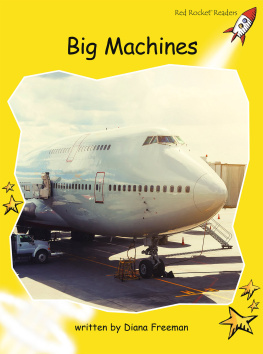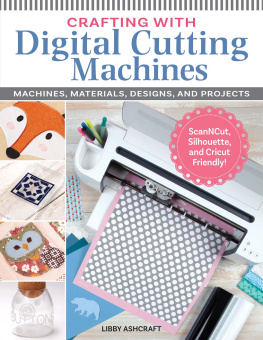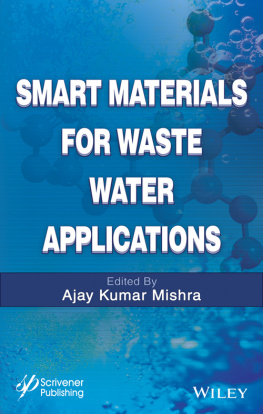Retrieval of Materials
with
Water Separation Machines
INSTAP ARCHAEOLOGICAL EXCAVATION MANUAL 1
Retrieval of Materials
with
Water Separation Machines
INSTAP ARCHAEOLOGICAL EXCAVATION MANUAL 1
by
Sarah E. Peterson
with contributions by
Philip P. Betancourt
Published by
INSTAP Academic Press
Philadelphia, Pennsylvania
2009
Design and Production by
INSTAP Academic Press
Philadelphia, PA, USA
Printing by
CRWGraphics
Pennsauken, NJ, USA
Library of Congress Cataloging-in-Publication Data
Peterson, Sarah E., 1983-
Retrieval of materials with water separation machines / by Sarah E. Peterson ; with contributions by
Philip P. Betancourt.
p. cm. -(INSTAP archaeological excavation manual ; 1)
Includes bibliographical references.
ISBN 978-1-931534-53-6 (alk. paper)
eISBN 978-1-623031-31-2 (epub)
Mobi ISBN 978-1-623031-31-2 (kindle)
1. Archaeology--Methodology. 2. Archaeology--Field work. 3. Excavations (Archaeology) 4. Flotation. 5. Soils--Analysis. I. Betancourt, Philip P., 1936II. Title.
CC76.P39 2009
930.1--dc22
2009006380
Copyright 2009
INSTAP Academic Press
Philadelphia, Pennsylvania
All rights reserved
List of Figures
Figure 1. A water separation machine in use at Platamonas in northern Greece. The main tank has been modified from an oil drum by cutting the rim to accommodate the sluiceway. Photo courtesy of Evi Margaritis
Figure 2. Examples of carbonized grape pips recovered through water separation. Photo courtesy of Evi Margaritis.
Figure 3. Examples of olive pits recovered through water separation. Photo courtesy of Evi Margaritis
Figure 4. Residue collected in the insert tray inside the main tank. Photo courtesy of Owen Berliner
Figure 5. Cross-section of the components of a water separation machine in which the force of gravity creates pressure for the flow of water through the system
Figure 6. Student clipping cloth mesh to the interior of the main tank
Figure 7. Gently stirring the soil sample inside the main tank to enhance agitation. Photo courtesy of Evi Margaritis
Figure 8. Photograph showing the flow of water from the main tank over the sluiceway and into the flot mesh
Figure 9. Water separation machine in use at the Chrysokamino Metallurgy Workshop. The machine was constructed from a 55-gallon metal drum with additions made of plastic pipes and sheet metal. Photo by P. Betancourt
Figure 10. Flote-Tech machine-assisted flotation device in use at Mycenae. Photo courtesy of Brooke Hundtoft
Introduction
A water separation, or flotation, machine is an instrument that divides soil into three components: the material that floats (called flot or light fraction), the stones and other heavy portions that do not float (called residue or heavy fraction), and the particles that either dissolve in water or become suspended in it and are washed away (Fig. 1).

Figure 1 . A water separation machine in use at Platamonas in northern Greece. The main tank has been modified from an oil drum by cutting the rim to accommodate the sluiceway. Photo courtesy of Evi Margaritis.
The primary purpose for utilizing such a device is the recovery of organic remains, such as charred seeds, charcoal, or small bones, which would otherwise be permanently lost. However, the machine is of great value for archaeological excavation because it allows for the collection of tiny artifacts of all classes, it divides them by size and weight, and it does not break fragile items. Water separation is very different from water screening, which consists of pouring or spraying water over a sieve, because this system only divides the soil into two components (the part that is larger than the screens mesh and that which is smaller than the screens mesh), so that the retrieval is limited by the size of the mesh and does not divide flot from residue. In the slang used by some archaeological excavations, both processes have been called water sieving, but it is important to distinguish between water separation and water screening because the two techniques produce very different results.
Use of a water separation machine requires four stages in the recovery of archaeological material:
Retrieval of archaeological sediments
Operation of the water separation machine
Sorting of materials
Study of materials
Goals for Using Water Separation Machines
One of the primary goals of the archaeologist is the collection of material evidence to aid in the understanding of the past, and the methods by which these remains are collected during excavation will influence these interpretations. If recovery techniques carried out in the field are biased toward larger, more visible remains, conclusions that are based solely on such materials will be incomplete and inaccurate. Additional contextual information, therefore, must be obtained from the collection and analysis of smaller, less noticeable items. Water separation allows for the retrieval of such materials.
Small archaeological remains that can be retrieved through water separation include the following:
Botanical materials such as tiny seeds, fragmentary plant parts, and charcoal, which will float during processing ()
Very small faunal remains such as animal bones, fish bones, sea urchin spines, and shells, which may float or sink
Flint, chert, and obsidian microliths or micro-debitage, including blades and fragments of large stone tools
High-prestige items like seal stones, beads, and pieces of metal jewelry

Figure 2 . Examples of carbonized grape pips recovered through water separation. Photo courtesy of Evi Margaritis.

Figure 3 . Examples of olive pits recovered through water separation. Photo courtesy of Evi Margaritis.
The presence of different types of archaeological remains at a site that can be recovered through water separation can provide valuable data for interpretation. Floral and faunal remains offer insight into diet and subsistence practices, domestication, the use of secondary products, and species selection. They can also aid in the reconstruction of the ancient environment and provide information about seasonality. Various inorganic artifacts, such as lithics, metal objects, and highprestige goods reveal aspects of the administration and economy of a site or civilization through details about specialization, storage, distribution, and exchange. Aside from information that can be understood from the occurrence of small archaeological remains at a site, quantitative analyses are also useful. It is possible, for example, to compare the occurrence of certain species of flora or fauna at a site over time, perhaps indicating changing patterns of exploitation. It may also be possible to more accurately define activities in different areas of the site, such as those associated with food processing or tool production.













